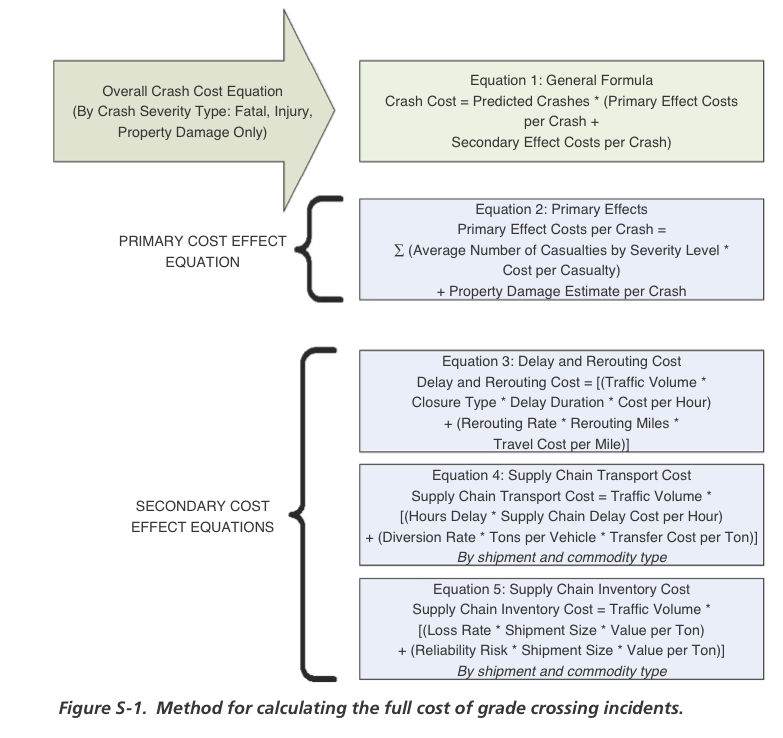NATIONAL COOPERATIVE HIGHWAY RESEARCH PROGRAM
Summary
Despite improvements that have reduced the number of highway-rail grade crossing incidents in the past 2 decades, evidence indicates that (a) railroad crossings remain a significant safety hazard, (b) the trends supporting the decline in incidents are unlikely to continue, and (c) solutions that reduce the risk of grade crossing incidents will continue to be costly. Although public funding currently is available for grade crossing enhancements, the funding level is periodically reset, a process whose outcome is ultimately determined by considering tradeoffs and competition with other categories of highway system enhancement.
The persistence of grade crossing safety issues and the necessity of competing for ever-scarcer surface transportation funds suggest the need for refining methods for gauging the costs of highway-rail grade crossing crashes. Crashes between trains and road vehicles typically are more severe and more costly than highway crashes in general. Less than 1% of police-reported highway crashes involve fatalities, compared with roughly 10% of highway- rail crashes (1). In addition, the costs of highway-rail crashes can extend well beyond the usual costs of general highway crashes because of (a) damage to railroad equipment and infrastructure; (b) the potential disruption of rail passenger service and the logistics supply chain; and (c) the potential for very rare, catastrophic events, such as multi-passenger casualties or hazardous material (hazmat) spills with major environmental or human health impacts.
Project Objectives
Grade crossing improvements can receive due consideration in transportation investment decision making only when a more credible accounting of comprehensive highway-rail grade crossing crash costs is available. NCHRP Report 755: Comprehensive Costs of Highway-Rail Grade Crossing Crashes addresses this need by meeting the following research objectives:
- Developing a comprehensive grade crossing crash taxonomy that includes costs, their contributing factors, and their orders of magnitude. The taxonomy provides the conceptual foundation on which models and tools are subsequently derived.
- Developing an analytic framework that enables the estimation and forecasting of grade crossing crash costs and effectively supports resource allocation decisions. The analytic framework provides a well-defined process for arriving at grade crossing crash cost estimates, thus enhancing existing methods that support resource allocation decisions.
- Explaining how the research findings are readily usable and accessible to the community of practitioners.
Read full report (PDF) here: Cost of Highway-Rail Crossing Crashes
About The Transportation Research Board
www.trb.org
“The Transportation Research Board is one of six major divisions of the National Research Council, which serves as an independent adviser to the federal government and others on scientific and technical questions of national importance. The National Research Council is jointly administered by the National Academy of Sciences, the National Academy of Engineering, and the Institute of Medicine. The mission of the Transportation Research Board is to provide leadership in transportation innovation and progress through research and information exchange, conducted within a setting that is objective, interdisciplinary, and multimodal.”
Tags: Cost of Highway-Rail Crossing Crashes, NCHRP, safety, TRB







 RSS Feed
RSS Feed